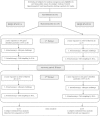Effects of ultrafine particles on the allergic inflammation in the lung of asthmatics: results of a double-blinded randomized cross-over clinical pilot study
- PMID: 25204642
- PMCID: PMC4354282
- DOI: 10.1186/s12989-014-0039-3
Effects of ultrafine particles on the allergic inflammation in the lung of asthmatics: results of a double-blinded randomized cross-over clinical pilot study
Abstract
Background: Epidemiological and experimental studies suggest that exposure to ultrafine particles (UFP) might aggravate the allergic inflammation of the lung in asthmatics.
Methods: We exposed 12 allergic asthmatics in two subgroups in a double-blinded randomized cross-over design, first to freshly generated ultrafine carbon particles (64 μg/m³; 6.1 ± 0.4 × 10⁵ particles/cm³ for 2 h) and then to filtered air or vice versa with a 28-day recovery period in-between. Eighteen hours after each exposure, grass pollen was instilled into a lung lobe via bronchoscopy. Another 24 hours later, inflammatory cells were collected by means of bronchoalveolar lavage (BAL). (
Trial registration: NCT00527462) RESULTS: For the entire study group, inhalation of UFP by itself had no significant effect on the allergen induced inflammatory response measured with total cell count as compared to exposure with filtered air (p = 0.188). However, the subgroup of subjects, which inhaled UFP during the first exposure, exhibited a significant increase in total BAL cells (p = 0.021), eosinophils (p = 0.031) and monocytes (p = 0.013) after filtered air exposure and subsequent allergen challenge 28 days later. Additionally, the potential of BAL cells to generate oxidant radicals was significantly elevated at that time point. The subgroup that was exposed first to filtered air and 28 days later to UFP did not reveal differences between sessions.
Conclusions: Our data demonstrate that pre-allergen exposure to UFP had no acute effect on the allergic inflammation. However, the subgroup analysis lead to the speculation that inhaled UFP particles might have a long-term effect on the inflammatory course in asthmatic patients. This should be reconfirmed in further studies with an appropriate study design and sufficient number of subjects.
Figures




References
-
- Understanding the health effects of ambient ultrafine particles. 2013 HEI Perspectives 3. Health Effects Institute, Boston, MA; 2013.
Publication types
MeSH terms
Substances
Associated data
LinkOut - more resources
Full Text Sources
Other Literature Sources
Medical

